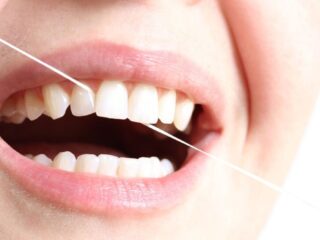
Imagine optimizing your physical and mental health, not by visiting a doctor or adopting a one-size-fits-all regimen, but by experimenting and tailoring strategies to your unique biology. This is the promise of biohacking—a growing movement that puts health and wellness control directly into the hands of individuals. From tech enthusiasts to wellness seekers, people everywhere turn to biohacking to optimize performance, increase energy, and improve their overall quality of life.
But what exactly is biohacking? Why is it gaining traction, and how are individuals making it a part of their daily lives? Let’s dive into the world of biohacking, exploring its methods, benefits, and risks before examining how it fits into modern health and wellness.
What Is Biohacking?
The term “biohacking” might sound futuristic, but at its core, it’s simply about making small, science-backed changes to your lifestyle to improve your body and mind. Some approaches involve advanced technology, while others rely on age-old techniques or nutritional strategies.
Think of biohacking as self-experimentation. As scientists test a hypothesis in a lab, biohackers test various methods to see how their bodies respond. For example, someone might track their sleep patterns using wearable technology to understand how different behaviors—like drinking coffee late at night or meditating before bed—impact their rest. Others might explore nutrition, fitness routines, or even supplements to enhance productivity, memory, and physical endurance.
Another innovative branch worth mentioning is peptides and their role in managing human health, particularly, peptides related to muscle and tissue repair like bpc 157. If you are wondering where to purchase bpc 157, we suggest visiting Peptide Shop.
Why Is Biohacking Becoming Popular?
Biohacking is booming because it appeals to a deep human desire for agency and self-improvement. At a time when many people feel overwhelmed by generalized health advice, biohacking empowers individuals to take charge of their wellness in ways tailored to their needs.
The rise of wearable devices like smartwatches and fitness trackers has also helped propel interest in biohacking. These tools provide data on heart rate, activity levels, and calorie burn, giving users actionable insights into their health.
Furthermore, the internet has allowed knowledge-sharing to flourish. Social media platforms, podcasts, and blogs have created spaces where people openly share biohacking experiments, successes, and failures. Influential figures like Tim Ferriss and Dave Asprey have popularized ideas like intermittent fasting and bulletproof coffee, inspiring millions to incorporate biohacking into their routines.
Popular Biohacking Techniques
Biohacking isn’t a single practice—it’s a collection of strategies that vary widely in complexity and scientific backing. Here are some of the most well-known methods:
Intermittent Fasting
One of the simplest entry points into biohacking is intermittent fasting (IF). This eating pattern alternates between periods of eating and fasting, with popular schedules including 16/8, where you fast for 16 hours and eat within an 8-hour window. Studies suggest intermittent fasting may help with weight loss, improve metabolic health, and even boost longevity. Many individuals report better focus and energy levels while fasting, making it a staple in biohacking circles.
Wearable Technology
From Fitbit to Oura Rings, wearables make it easy to track your health metrics in real-time. These devices monitor diverse parameters, including heart rate variability (HRV), sleep quality, steps taken, and even blood oxygen levels. Armed with this data, users can fine-tune their lifestyle choices. For instance, someone noticing poor sleep scores might experiment with limiting screen time or introducing magnesium supplements to their routine.
Nootropics
Nootropics, often called “smart drugs,” are supplements, drugs, or other substances designed to enhance cognitive function.

Popular nootropics include caffeine, L-theanine, and omega-3 fatty acids, all of which can boost alertness, memory, and focus. More advanced biohackers explore compounds like piracetam or try brain-stimulating nootropic stacks for productivity.
Cold Plunges and Sauna Therapy
Temperature-based biohacks like cold-water immersion and heat therapy are gaining ground. Cold plunges are praised for reducing inflammation, boosting mood, and improving recovery, while saunas may increase cardiovascular health and detoxification. Among biohackers, sauna use is increasingly popular for recovery and stress reduction. Notably, infrared saunas offer a unique experience compared to traditional models—delivering warmth more efficiently while avoiding high ambient temperatures. Those curious about integrating this approach can explore a range of high-quality infrared saunas designed for both health benefits and user convenience. Both practices are used to trigger hormesis, a biological response where controlled, low-level stress helps strengthen the body.
Diet Experimentation
Many people experiment with diets such as keto, paleo, or plant-based eating as a way to find what works best for them. By paying attention to how foods affect digestion, energy, and even mental clarity, biohackers aim to optimize fuel for their bodies and brains.
The Benefits of Biohacking
Biohacking appeals to people who crave personalized solutions to their health issues. Rather than applying broad recommendations, it allows for a tailored approach. For instance, someone struggling with fatigue might find renewed energy through proper supplementation, better sleep hygiene, and mindful eating.
Another advantage is the empowerment that comes with self-experimentation. Observing patterns and making adjustments can deepen an individual’s understanding of their body and encourage long-term health habits.
Lastly, biohacking has also spurred innovation in technology and health sciences. Wearables and apps have brought awareness to health metrics we previously overlooked. At-home testing kits and analysis tools are making advanced health data more accessible.
The Risks and Criticisms of Biohacking
Despite its promise, biohacking isn’t without risks. Some techniques lack robust scientific evidence, and experimenting without proper research can backfire. For example, taking unregulated supplements or improperly combining nootropics can lead to harmful side effects or drug interactions.

Another challenge is the potential for obsession. Tracking every aspect of your life, calories, steps, hours of sleep—can make health feel like a numbers game, detracting from natural enjoyment.
Additionally, while biohacking is often marketed as a DIY approach, some methods—like gene editing or IV therapy—are costly, making them accessible only to a privileged few, raising concerns about equity in health advancements.












